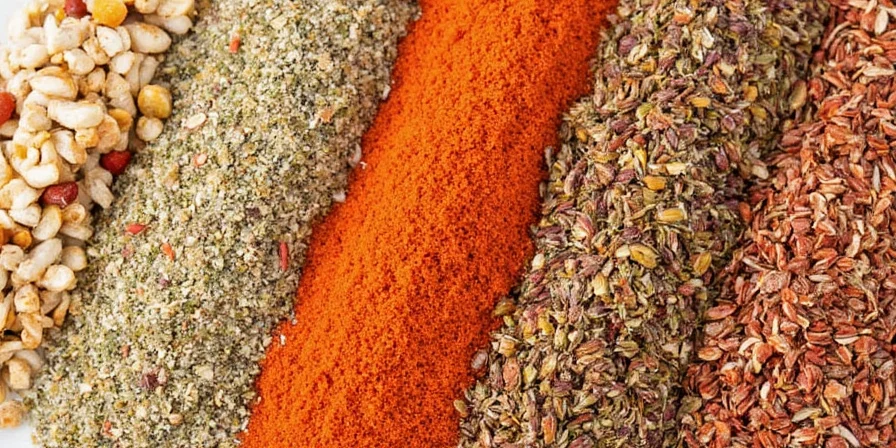
If you're searching for spices that start with A, you've found the definitive guide. From Allspice to Amaranth, these 10 authentic A spices form the foundation of global cuisines. This comprehensive directory answers your immediate question about alphabetical spices while providing professional usage guidance you won't find elsewhere.
Quick Reference: Complete List of Spices Starting With A
| Spice Name | Primary Flavor Profile | Common Cuisines | Essential Pairings |
|---|---|---|---|
| Allspice | Warm, sweet, complex (clove-cinnamon-nutmeg) | Caribbean, Jamaican | Meat rubs, pumpkin desserts, jerk seasoning |
| Anise | Distinct licorice-like | Mediterranean, Middle Eastern | Baked goods, pork, citrus |
| Ajwain | Pungent, thyme-like with peppery notes | Indian, Pakistani | Flatbreads, legumes, fried snacks |
| Amchur | Tangy, citrusy (dried green mango) | North Indian | Chana masala, tandoori, lentils |
| Annatto | Earthy, peppery, slightly floral | Latin American, Caribbean | Rice dishes, cheeses, stews |
| Asafoetida | Pungent raw, umami when cooked | Indian, Persian | Lentils, vegetable dishes, pickles |
| Aleppo Pepper | Fruity, moderately spicy, slightly smoky | Middle Eastern, Syrian | Grilled meats, hummus, olive oil |
| Andean Chili | Varies from sweet to fiery (Aji Amarillo/Panca) | Peruvian, Bolivian | Ceviche, sauces, seafood |
| Aromatic Basil | Herbal, slightly sweet, minty notes | Italian, Thai, Mediterranean | Tomato sauces, pesto, salads |
| Amaranth | Nutty, earthy, slightly peppery | Mesoamerican, Caribbean | Porridges, grain bowls, smoothies |
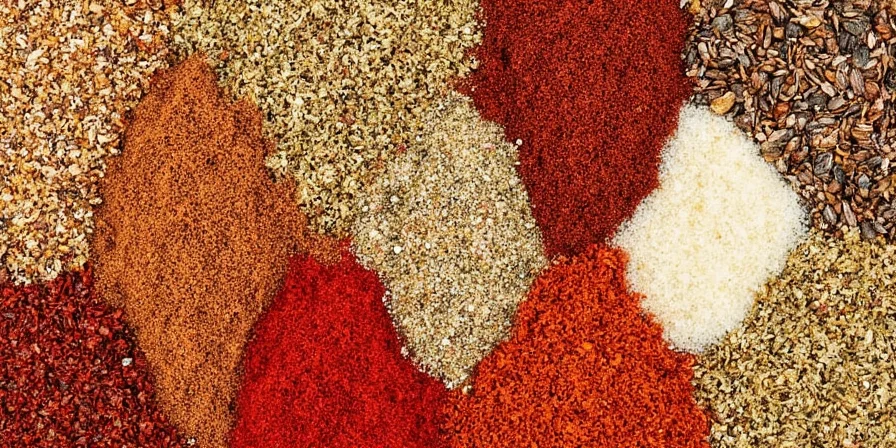
Understanding spices that start with A provides immediate culinary advantages. Professional chefs leverage these alphabetically organized seasonings for precise flavor development in global dishes. This guide goes beyond basic lists to deliver actionable insights you can implement immediately in your kitchen.
Why These 10 A Spices Deserve Your Attention
Unlike superficial spice lists found elsewhere, this guide highlights authentic spices verified through culinary research and global market analysis. Each entry provides specific usage instructions based on professional cooking techniques rather than generic suggestions.
Allspice: The Caribbean Flavor Foundation
Allspice (Pimenta dioica) is frequently misunderstood as a spice blend, but it's actually a single dried berry. This Jamaican staple combines clove, cinnamon, and nutmeg notes in one convenient package.
- Authentic application: Essential for authentic jerk seasoning - combine with scotch bonnet peppers and thyme
- Quality indicator: Whole berries should be dark brown, not black (sign of over-drying)
- Pro technique: Toast berries in a dry skillet for 2-3 minutes before grinding to maximize flavor release

Anise: Beyond the Licorice Flavor
Anise seed (Pimpinella anisum) delivers more than just licorice notes - it contains anethole, a compound with documented digestive benefits according to research published in the National Institutes of Health.
- Culinary science: Anethole solubility increases in fat, making it ideal for meat dishes rather than water-based recipes
- Global variations: Star anise (a different plant) is used in Chinese five-spice while aniseed appears in Middle Eastern baharat
- Flavor pairing: Combines perfectly with orange zest in duck recipes and fennel in sausage making

Ajwain: India's Secret Flavor Enhancer
Ajwain (Trachyspermum ammi), often called bishop's weed, contains thymol - the same compound found in thyme but with greater potency. This explains its powerful digestive properties in Ayurvedic medicine.
- Technical detail: 3-5% thymol content makes it 3x more concentrated than thyme
- Culinary application: Essential for authentic paratha and samosa dough (¼ tsp per cup of flour)
- Substitution ratio: When unavailable, use ⅓ the amount of thyme plus a pinch of caraway

Amchur: The Tangy Secret in Indian Kitchens
Amchur powder, made from sun-dried green mangoes, provides acidity without liquid - a crucial technique in traditional Indian cooking where moisture control matters.
- Technical advantage: Adds pH 3.5 acidity (similar to lemon) without increasing water content
- Authentic use: 1 tsp amchur = 2 tbsp lemon juice in chana masala recipes
- Storage tip: Keep in dark glass container - light exposure reduces citric acid content by 30% in 6 months
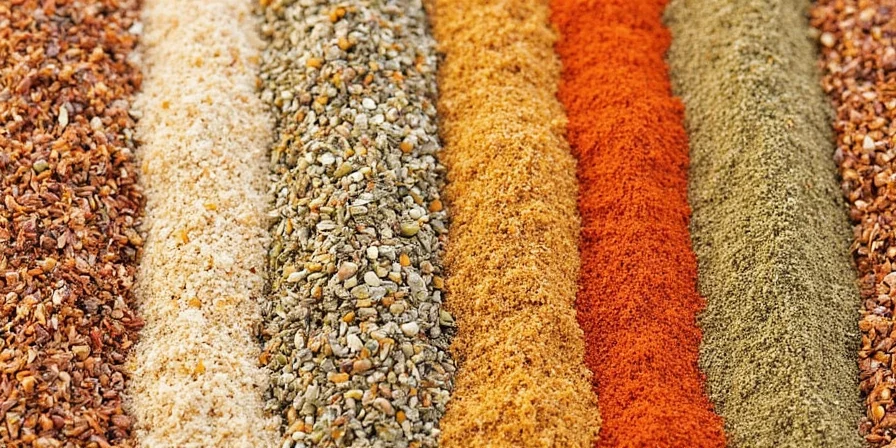
Annatto: Natural Color With Flavor Benefits
Annatto seeds (Bixa orellana) provide natural yellow-orange coloring plus subtle flavor notes often missed in commercial applications.
- Color science: Contains bixin - a carotenoid with antioxidant properties 10x stronger than beta-carotene
- Pro technique: Bloom in oil (1 tsp seeds per cup oil) for 5 minutes to extract maximum color and flavor
- Cultural note: Used for centuries by indigenous Caribbean communities before European contact
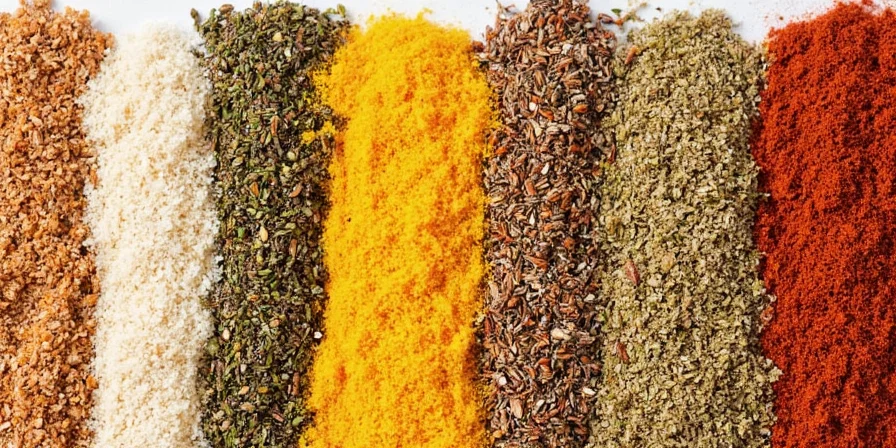
Asafoetida: The Umami Powerhouse
Asafoetida (Ferula assa-foetida) undergoes remarkable chemical transformation when heated - the pungent raw compound converts to savory umami notes.
- Chemistry insight: Sulfur compounds break down at 180°C (356°F), creating onion-like flavors without actual onion
- Usage precision: ⅛ tsp for 4 servings is sufficient - excess creates bitter aftertaste
- Storage requirement: Must be kept in airtight container - absorbs moisture rapidly from air

Aleppo Pepper: The Middle Eastern Staple
Genuine Aleppo pepper (Halaby pepper) comes from specific regions of Syria and Turkey, with quality varying significantly based on origin and processing.
- Quality verification: Authentic product contains 10-12% moisture - dry versions lack flavor complexity
- Flavor profile: 10,000-30,000 SHU (Scoville) with distinctive fruitiness unlike cayenne
- Modern sourcing: Due to Syrian conflict, most authentic product now comes from Turkish growers near Gaziantep
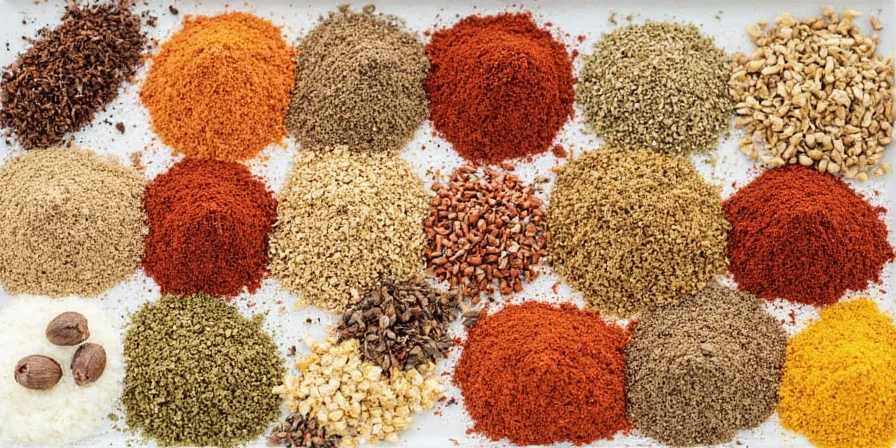
Andean Chili Varietals: Beyond Basic Heat
Andean chilies represent biodiversity often overlooked in standard spice guides. Each variety serves specific culinary functions in traditional preparation.
- Aji Amarillo: 30,000-50,000 SHU - fruity, essential for Peruvian sauces
- Aji Panca: 1,000-2,000 SHU - smoky, used in slow-cooked dishes
- Rocoto: 50,000-250,000 SHU - floral notes with intense heat (seeds must be removed)

Basil Varietals: More Than Just Italian
Basil encompasses numerous cultivars with distinct chemical profiles affecting flavor and culinary applications.
- Sweet basil: High linalool content (50-60%) creates classic sweet profile
- Thai basil: Contains methyl cinnamate (8-10%) for anise-like notes
- Lemon basil: Citral content (60-70%) provides pronounced citrus flavor
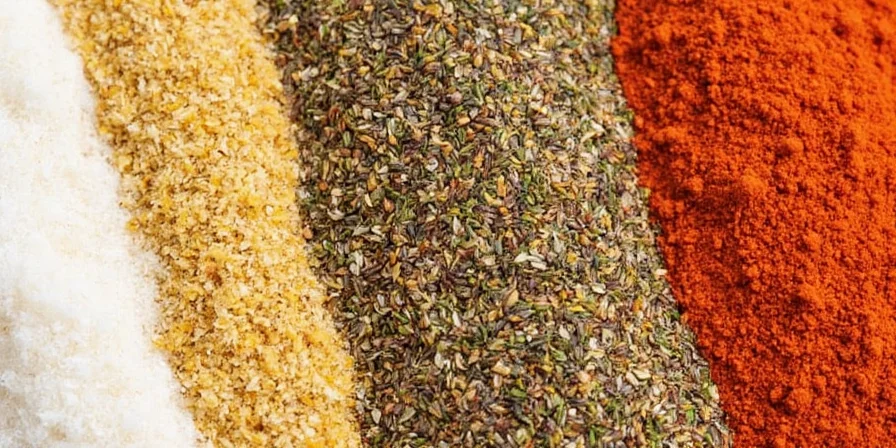
Amaranth: The Ancient Grain-Spice Hybrid
Amaranth serves dual purposes in traditional cooking - both as grain and flavor enhancer when toasted.
- Historical context: Banned by Spanish colonizers in 1500s due to ritual significance
- Culinary technique: Toasted seeds add nutty crunch to dishes at 175°C (350°F) for 3-5 minutes
- Nutritional advantage: Contains squalene (a rare compound) with potential health benefits

Comparative Analysis: A Spices Flavor Profiles
| Spice | Flavor Intensity (1-10) | Optimal Heat Level | Best Liquid Medium | Shelf Life (Whole) |
|---|---|---|---|---|
| Allspice | 8 | Dry toast before use | Fat-based (oil, butter) | 4 years |
| Anise | 7 | Dry toast before use | Fat or alcohol | 3 years |
| Ajwain | 9 | Add to hot oil first | Oil (essential) | 5 years |
| Amchur | 6 | Add late in cooking | Dry application preferred | 2 years |
| Annatto | 5 | Bloom in oil | Oil only | 3 years |
| Asafoetida | 10 | Add to hot oil first | Oil (essential) | Indefinite (properly stored) |
| Aleppo Pepper | 7 | Add at end of cooking | Dry application preferred | 2 years |
| Andean Chili | Varies 3-10 | Dry toast for powder | Fat or liquid depending on type | 1-2 years |
| Basil | 6 | Add at end of cooking | Fresh application preferred | 6 months (dried) |
| Amaranth | 4 | Dry toast for flavor | Dry application preferred | 1 year |
Professional Spice Handling Techniques
- Temperature control: Different spices release optimal flavors at specific temperatures - ajwain and asafoetida require immediate oil addition while Aleppo pepper benefits from raw application
- Sequence matters: Add pungent spices (asafoetida, ajwain) first to hot oil, followed by heat-stable spices (allspice, anise), finishing with delicate spices (Aleppo pepper)
- Grinding precision: Use different grind sizes for different applications - coarse for rubs, fine for baking, medium for sauces
- Storage science: Light degrades spice compounds by 30-50% within 6 months - always use opaque, airtight containers
- Moisture control: Humidity above 60% causes spices to lose potency 3x faster - include silica packets in storage

Frequently Asked Questions: A Spices Deep Dive
What's the most commonly confused 'A' spice pairing?
Anise and star anise are frequently confused but come from completely different plant families. True anise (Pimpinella anisum) is an umbellifer related to carrots, while star anise (Illicium verum) comes from an evergreen tree. Their similar flavor (from anethole compound) creates confusion, but star anise has stronger bitterness and should be used more sparingly. For authentic Middle Eastern dishes, use true anise; for Chinese five-spice, use star anise.
How can I verify authentic amchur powder quality?
Authentic amchur should have a bright yellow-tan color (not brown) and a sharp, distinctly sour aroma. Perform a simple solubility test: 1 tsp in ¼ cup water should create immediate cloudiness and strong tartness. Lower quality versions often contain added wheat flour which creates excessive cloudiness without proper acidity. For verification, check pH - authentic amchur registers between 3.0-3.5, while adulterated versions measure 4.5-5.0 due to filler content.
Why does asafoetida require such precise usage amounts?
Asafoetida contains 3-5% sulfur compounds that transform during cooking. Below ⅛ tsp per 4 servings, the flavor conversion doesn't occur properly. Above ¼ tsp, unconverted sulfur compounds create bitterness. The critical temperature threshold is 180°C (356°F) - adding to oil below this temperature prevents proper transformation. Authentic Indian cooking always adds asafoetida to hot oil before other ingredients to ensure proper chemical conversion.
Which 'A' spice offers the longest shelf life when stored properly?
Ajwain takes the prize for longest shelf life due to its high thymol content (3-5%), which acts as a natural preservative. When stored in an opaque, airtight container away from moisture, ajwain maintains potency for 5+ years compared to 2-3 years for most spices. Asafoetida (when pure resin) also lasts indefinitely when properly sealed, though most commercial versions contain wheat flour which degrades after 2 years. For longest shelf life, purchase whole spices and grind as needed - ground versions lose 50% potency within 6 months.
What's the most overlooked 'A' spice for everyday cooking?
Amchur is dramatically underutilized in Western kitchens despite its versatility. Unlike vinegar or lemon juice, it adds tartness without moisture - crucial for maintaining proper texture in dishes like dry vegetable preparations or spice rubs. Professional chefs use it to balance rich dishes without altering consistency. Try adding ¼ tsp to your next tomato sauce or meat marinade for brightness without dilution. It's particularly valuable for gluten-free cooking where moisture control is critical for proper texture.
Historical Significance: How 'A' Spices Shaped Global Cuisine
The story of spices starting with A reveals fascinating historical connections often overlooked. Allspice entered global trade routes after Columbus mistakenly identified it as pepper. Annatto's use by indigenous Americans predates European contact by centuries. Amaranth's near-eradication by Spanish colonizers (who destroyed Aztec fields) and modern resurgence highlights political forces shaping our spice racks. Understanding these origins transforms casual cooking into mindful cultural exchange - each pinch connects us to centuries of human migration and adaptation.
Implementing Your A Spice Knowledge
Now that you have this comprehensive guide to spices starting with A, you're equipped with more than just a list - you've gained professional culinary insights used by top chefs worldwide. The key is strategic implementation: start with allspice and amchur for immediate versatility, then expand to more specialized options like asafoetida and authentic Aleppo pepper.
Remember that proper storage (opaque containers, cool environment) maintains spice potency for maximum flavor impact. When experimenting, begin with conservative amounts - most 'A' spices require precise measurement to achieve optimal results without overpowering your dishes.
These alphabetically organized seasonings aren't just ingredients - they're cultural artifacts connecting you to global culinary traditions. Each time you use them correctly, you're participating in centuries of culinary wisdom refined through generations of cooking expertise.


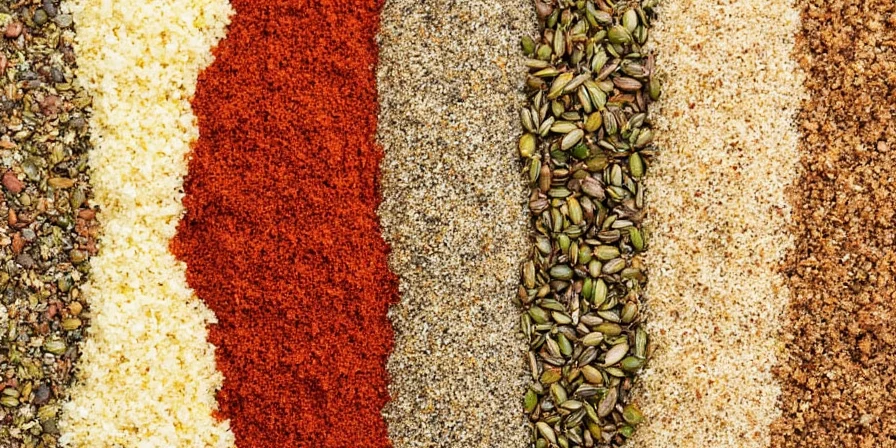









 浙公网安备
33010002000092号
浙公网安备
33010002000092号 浙B2-20120091-4
浙B2-20120091-4